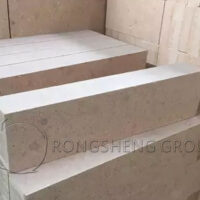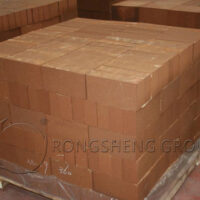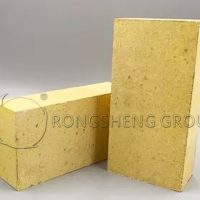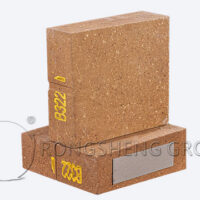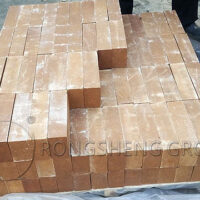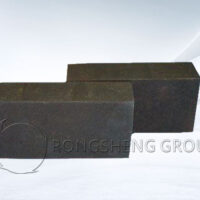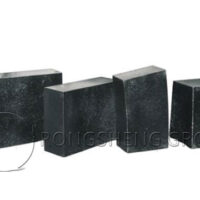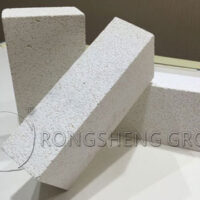Magnesite brick is an alkaline refractory with a magnesium oxide content of more than 90% and periclase as the main crystal phase. Generally, it can be divided into two categories: sintered magnesia bricks (also called fired magnesia bricks) and chemically bonded magnesia bricks (also called unfired magnesia bricks). Magnesia bricks with high purity and high firing temperature are called directly bonded magnesia bricks because of the direct contact of periclase grains. Bricks made from fused magnesia are called fused magnesia bricks. So, what about the ability of magnesia bricks to transfer heat? What conditions will affect its ability to transfer heat? Next, let’s decrypt the answer.
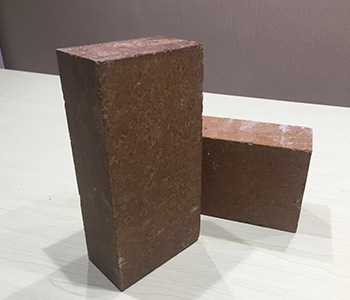
Characteristics of Magnesia Brick
Magnesia bricks have high refractoriness, good resistance to alkali slag, high starting temperature for softening under load, but poor thermal shock resistance. The raw materials of sintered magnesia bricks are sintered at a high temperature of 1550 to 1600 ℃ after being crushed, batched, kneaded, and shaped. The firing temperature of high-purity products is above 1750°C. Unburned magnesia bricks are made by adding appropriate chemical binders to magnesia, then mixing, molding and drying.
Since the main crystal of magnesia brick is strong alkaline periclase, it has a high density (about 3.5g/cm3), less moisture, and high molding pressure. The apparent porosity is low (about 19%), and the bulk density (up to about 2.8 g/cm3). Therefore, multi-mineral composition, strong alkalinity, and high density are the notable characteristics of magnesia bricks.
Thermal Conductivity of Magnesia Brick
The thermal conductivity of magnesia bricks is termed thermal conductivity. It can characterize the ability of magnesia bricks to transfer heat. Thermal conductivity refers to the amount of heat passed per unit area in unit time and unit temperature gradient in the process of energy transfer.
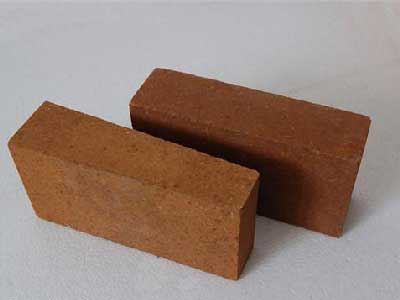
Factors Affecting the Ability of Magnesia Bricks to Transfer Heat
- The thermal conductivity of refractory bricks of different materials is often very different. At room temperature, the thermal conductivity of various refractory bricks can range from a few percent to several tens (w/(m·℃)), and the difference between the highest value and the lowest value is nearly a thousand times. As the temperature increases, the thermal conductivity difference of various refractory bricks tends to decrease, but the difference is still very large. For example, at 1000℃, the thermal conductivity of lightweight silica is only about 0.35W/(m·℃). The recrystallized silicon carbide product is about 17.5W/(m·℃). Graphite can be as high as 35W/(m·℃).
- The thermal conductivity of magnesia brick is not only affected by temperature but also closely related to its chemical mineral composition and organizational structure. When refractory bricks are composed of crystals, the properties of the crystals have a significant effect on thermal conductivity. As we all know, the thermal conductivity of inorganic non-metallic materials is generally much lower than that of metals. This is because inorganic non-metallic materials are different from metals with metallic bonds and have very few free electrons. In this material, the heat conduction caused by free electrons is extremely limited, and it is mainly determined by the degree of deviation of the lattice vibration from resonance. The greater the deviation from resonance, the smaller the thermal conductivity. The deviation degree of the lattice vibration increases with the increase of the difference in the molar mass of the constituent substances. Therefore, the thermal conductivity of the simple substance is the largest, and that is why the thermal conductivity of graphite is larger.
- The magnesia brick has a crystal with a complex structure, which has a greater heat radiation effect on the lattice, and the thermal conductivity becomes smaller. For example, MgO, A12O3, and MgAl2O4 are equiaxed crystals, but due to the complex structure of MgAl2O4, the thermal conductivity is low. Anisotropic crystals have greater thermal conductivity along the direction where the particles are dense. For example, quartz is densely packed along the c-axis direction, and its thermal conductivity (13.6W/(m·℃)) is about twice that of the one perpendicular to the c-axis direction (7.2W/(m·℃)). Another example is the layered structure of graphite, the thermal conductivity parallel to the layer direction is about 4 times the direction perpendicular to the layer.
- If there are defects in the crystal, such as the formation of a replacement solid solution, the regularity of the crystal structure is destroyed, causing heat scattering and reducing the thermal conductivity. Other crystal defects such as vacancies and dislocations have similar effects. Similarly, due to the heat scattering phenomenon of grain boundaries, the thermal conductivity of polycrystalline materials is lower than that of single crystals. Materials composed of fine grains are lower than those composed of coarse grains. The material contains impurity components, and since scattering also occurs, the thermal conductivity is also reduced.
- When the refractory brick contains a glass phase, due to the disordered amorphous structure, the probability of collision between atoms is high, so the thermal conductivity is lower than that of crystals. When the refractory brick contains pores, the thermal conductivity of the gas is smaller than that of the solid. Therefore, as the porosity increases, the thermal conductivity of the material decreases. This is the basic reason for the low thermal conductivity of porous materials.
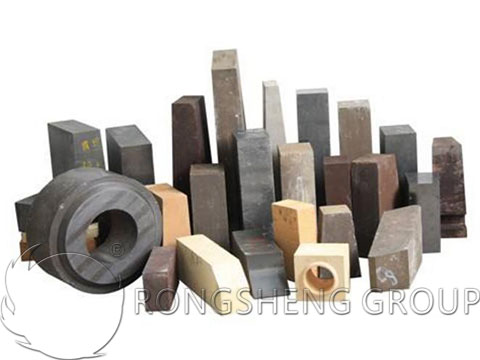
Use of Magnesia Bricks for Ladle
Magnesia bricks have good high-temperature performance and strong resistance to alkaline slag. Therefore, it is widely used in steelmaking furnace linings, ferroalloy furnaces, and iron mixers in the iron and steel industry. Non-ferrous metallurgical industry furnaces, such as copper, lead, zinc, and side linings. Limekiln in the building materials industry. Regenerator lattice body and heat exchanger in the glass industry. High-temperature calcining kilns, shaft kilns, and tunnel kilns in the refractory industry.
Precautions for Magnesia Brick Storage
Magnesia bricks have lower resistance to hydration at high temperatures. Although the raw materials and products of magnesia bricks are calcined at high temperatures, they still have hydration properties. So in any case, pay attention to waterproof and moisture-proof.
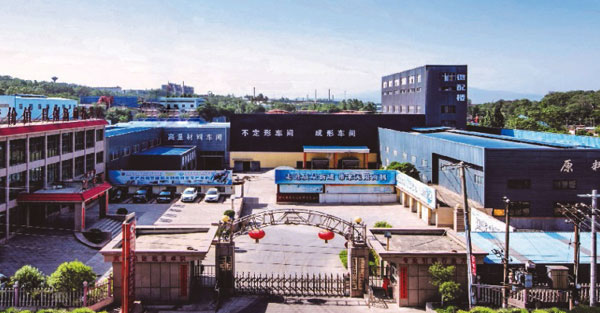
Rongsheng Refractory Brick Manufacturer
Rongsheng is an experienced refractory brick manufacturer and sales company. Rongsheng’s refractory products have been used by customers in more than 60 countries around the world. The application effect is good. Rongsheng refractory manufacturer mainly produces alumina bricks, magnesia bricks, silica bricks, mullite bricks, corundum bricks, zirconia bricks, magnesia carbon bricks, carbon bricks, etc. If your thermal furnace equipment needs to be refurbished or you are preparing to build new equipment, and you need to purchase refractory lining materials, please contact us. We will provide you with services according to your specific needs.

